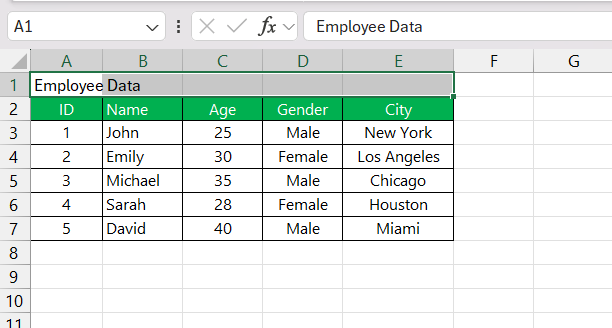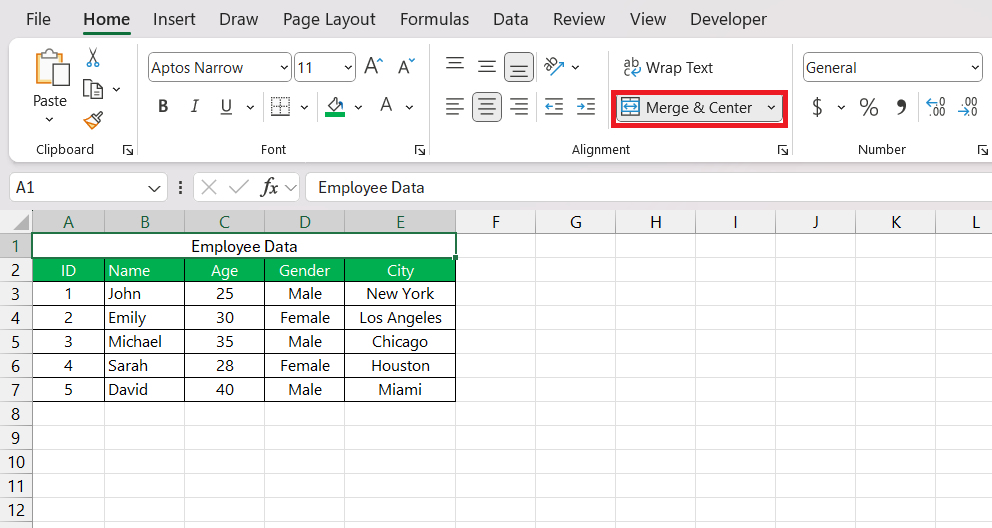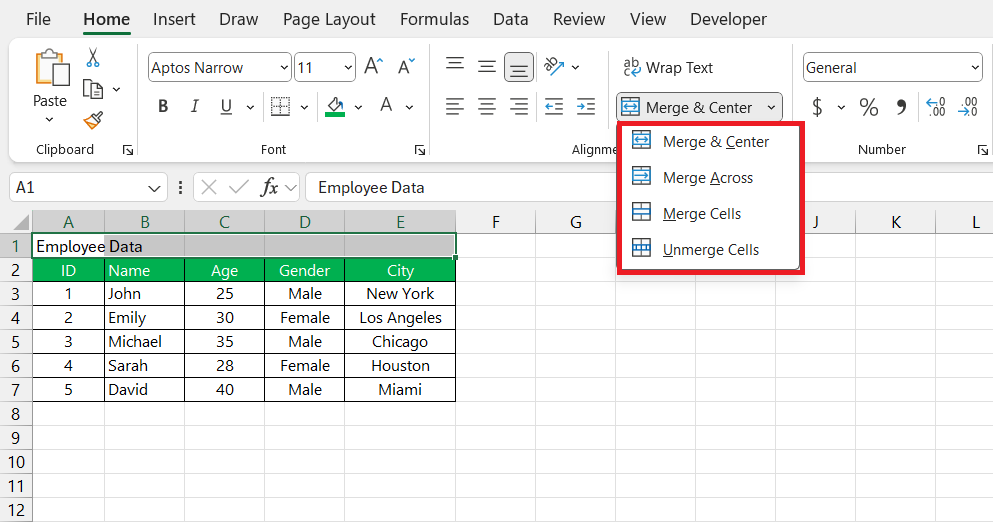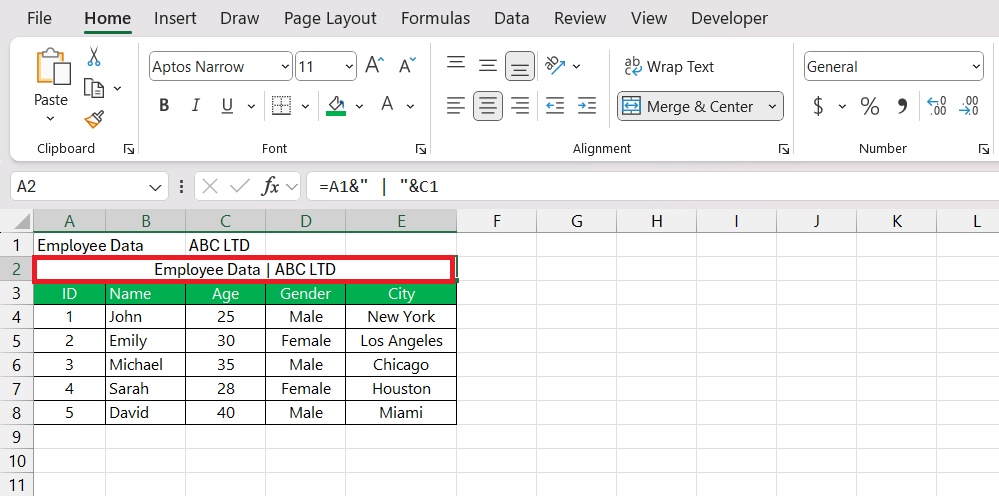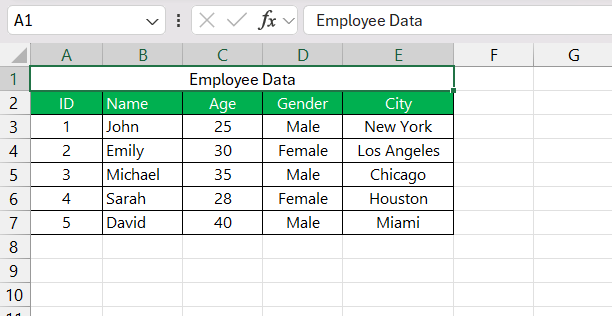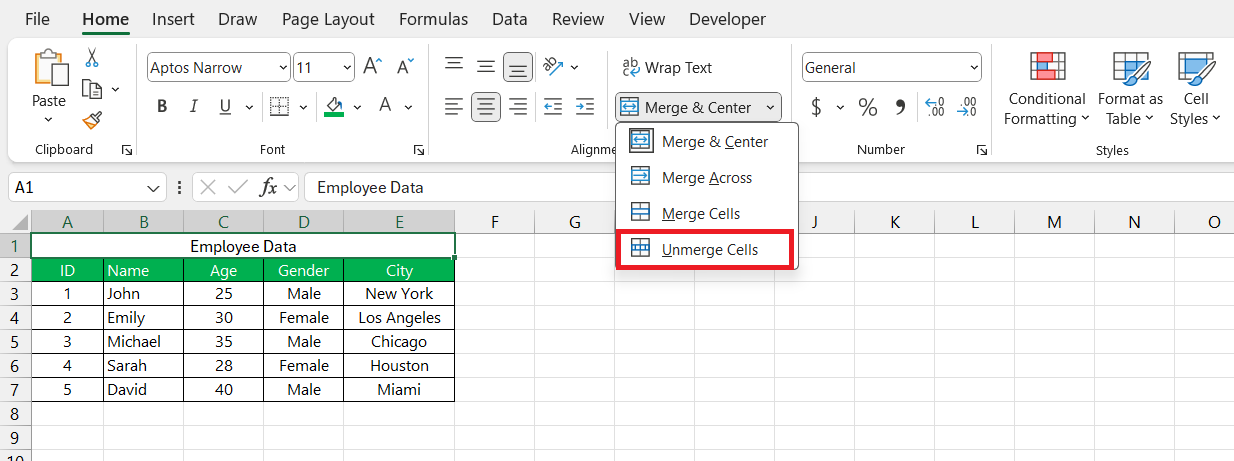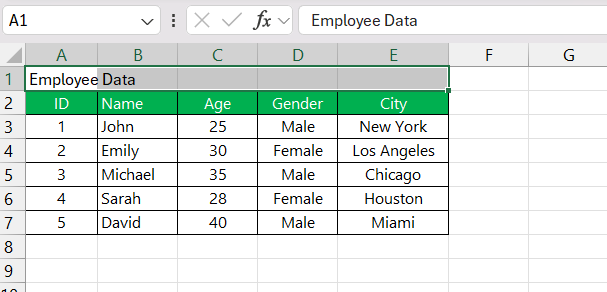Merging cells in Microsoft Excel is a useful feature that allows you to combine two or more adjacent cells into a single larger cell. This can help create visually appealing headers, organize data more effectively, and improve the overall readability of your spreadsheet. Knowing how to merge cells efficiently can streamline your formatting process and make your data presentation more polished and professional.
Key Takeaways:
- Merging cells in Excel enhances readability and visual appeal by creating prominent headings and organizing information effectively.
- Options like “Merge & Center,” “Merge Across,” and “Merge Cells” cater to different formatting needs.
- Keyboard shortcuts (e.g., ALT + H + M + M for Windows) streamline the merging process for efficiency.
- However, only the data from the upper-left cell is retained, so back up important information or use concatenation functions to avoid data loss.
- Use merging sparingly, as it can complicate sorting, filtering, and formula calculations.
Table of Contents
Introduction to Excel Cell Merging
Understanding the Basics of Cell Merging
When you start working with Excel, knowing how to efficiently format your spreadsheet can make the data more understandable and visually appealing. Cell merging is one such formatting tool that could be used to enhance your document’s readability and overall look. But what exactly is cell merging? It’s the process where you combine two or more adjacent cells into one larger cell, which can be a great way to create prominent headings or organize information neatly.
When to Use Merging in Your Excel Worksheets
Deciding when to merge cells in your Excel worksheets can vary based on the task at hand. It’s super handy for creating elegant headers that span across multiple columns, making your titles pop and easier to spot. Plus, it’s a solid move for generating labels for datasets that relate to one another, keeping everything organized and clear. And if you’re building tables, merging can help you format areas spanning across rows and columns, presenting a sleek, uncluttered view of your data.
Need to combine bits of information from multiple cells? Merging comes to the rescue once more. For instance, suppose you’ve got a range of dates scattered across several cells but want them all in one spot. Merging lets you squish them together into a single cell, showing the complete date range neatly.
Remember though, while it spruces up your spreadsheet, over-merging might lead to a bit of a hassle when you’re sorting, filtering, or calculating data. So, merge with care, and only when it’s truly useful for your document.
Navigating to the Merge & Center Tool
Accessing Merge Options on Different Devices
Getting to the merge options in Excel can vary slightly depending on whether you’re using a PC, a Mac, a tablet, or even Excel Online. For those on a PC, the ‘Merge & Center’ button is comfortably nestled in the ‘Home’ tab, right in the ‘Alignment’ group. Mac users will find the same option in a similar location.
For those embracing the cloud with Excel Online, just look for the ‘Home’ tab, and you’re set.
Each version of Excel makes sure that you have the basic cell merging options, making it a familiar process across devices. But, it’s always a good idea to get acquainted with your specific device’s layout and commands to streamline your workflow.
Keyboard Shortcuts for Efficiency
Who doesn’t love a good shortcut? In the world of Excel, embracing keyboard shortcuts can ramp up your productivity to impressive new heights. When it’s time to merge cells, forget the endless clicks and let these quick combos do the heavy lifting.
For the Windows enthusiasts among you, the merge magic happens with:
- ALT + H + M + M: Merge those cells with ease.
- ALT + H + M + C: Not only merge but also center your content for that polished look.
- ALT + H + M + A: Spread a single cell’s content across a selection without losing any data.
- ALT + H + M + U: Made a mistake? Unmerge and go back to basics.
Remember, keyboard shortcuts are your express lane to efficiency, so keep them close and you’ll navigate Excel like a pro in no time.
Step-by-Step Guide to Merge Cells in Excel
Selecting the Cells You Want to Combine
Combining cells starts with selecting the exact cells you want to transform into one. Begin by clicking on the first cell in the range, then drag your mouse across to the last cell you’re looking to merge.
Once you’ve got your cells highlighted, you’re set to move on to the actual merging part, which is just a button click or keyboard shortcut away.
Choosing the Right Merge Option for Your Data
Picking the right merge option can make all the difference in how your data looks and behaves. Excel dishes out several merge options, each with its own flavor:
- Merge & Center: This is like the VIP treatment for your headers. Selecting this will merge the cells and perfectly center your content. Ideal for those bold titles at the top of your columns.
- Merge Across: If you’re working with rows and want to merge cells row by row, this is your go-to. It neatly merges cells in the same row but keeps the rows separate.
- Merge Cells: The minimalistic choice. It merges without centering, giving you the freedom to position your content as you wish afterward.
Here’s the scoop: you’ve got to think about what you want the end result to look like and how you’ll be handling the data. If centering is key, “Merge & Center” has got your back. For row-specific merging, “Merge Across” is your friend. And “Merge Cells” is there for when you want that simple, no-frills merge.
Pro tip: Always start your selection with the most important cell—the top or leftmost one—since that’s where your data will remain post-merge. All other data in the selected range will evaporate, so choose wisely!
Precautions and Common Mistakes
Avoiding Data Loss During the Merge Process
The golden rule of merging cells in Excel is this: protect your data at all costs. Remember that when you merge cells using ‘Merge & Center’ or ‘Merge Cells’, only the data in the upper-left cell (or the first cell you select) sticks around. The rest? Poof! Gone without a trace. That’s not magic you want to see happen to your crucial information.
Here’s how to keep your data safe and sound:
- Always, always double-check that the primary cell—the one whose data you want to keep—gets selected first.
- If you’re dealing with multiple chunks of data that you need to mesh together, consider alternatives like the ampersand (&) or CONCATENATE before going down the merge road.
Navigating the merge minefield in Excel can be tricky, but with a bit of know-how and a cautious approach, you can come out the other side with your data intact and your cells beautifully merged.
Limitations of Merging Cells in Excel
Merging cells does come with a few strings attached. First up, the ‘Merge & Center’ and ‘Merge Cells’ features are all about visuals—they’re not going to merge the values inside those cells. It’s style over substance, so to speak. Think of it like putting two beautiful cakes into one box—you still have two separate cakes, not a new combined flavor.
Then there’s the issue of sorting, filtering, or any other data-manipulation shenanigans you might want to pull. Merged cells can throw a wrench into the works, making these tasks tricky. Sort commands won’t play nice with ranges that include both merged and unmerged cells, so you may find yourself having to unmerge before you can proceed.
If you’re working with formulas, merged cells can also lead to inconsistent results or errors—especially if you’re referencing a range that includes both merged and unmerged cells. Excel might just scratch its head and say, “I can’t work with this.”
So, while merging can give your spreadsheet that polished look, remember that with great power comes great responsibility—and sometimes a little inconvenience.
Tips for Unmerging Cells Without Hassle
How to Safely Undo a Merge
Undoing a merge in Excel can be just as straightforward as the merging process itself. However, you’ll want to proceed with caution to ensure that your data isn’t lost in the unmerging shuffle. Initially, when you merge cells, the only data that remains is from the upper-left cell in the selection. Knowing this, here’s your safety net for unmerging:
STEP 1: Click on the merged cell you wish to unmerge.
STEP 2: Head over to the ‘Home’ tab to where the merge commands live and breathe.
STEP 3: Click the drop-down arrow next to the ‘Merge & Center’ button. Select ‘Unmerge Cells’ from that drop-down.
And there you have it, your cells return to their selves as if they’d never been merged.
It’s like pressing the “rewind” button. Just keep in mind, the data from those other cells won’t magically reappear, so if you need that info, make sure to copy it first or use ‘Command + Z’ (or ‘CTRL + Z’ on a PC) to fully undo the merge and get your original data back.
FAQ: Mastering Cell Merging in Excel
How do I merge cells together in Excel?
To merge cells in Excel, select the cells you want to combine, go to the ‘Home’ tab, click ‘Merge & Center’ to merge and center the content, or click the arrow next to it for more options like ‘Merge Across’ or ‘Merge Cells’. Remember, this will keep the content from the top-left cell and discard the rest.
What is the shortcut for merge cells in Excel?
The shortcut for merging cells in Excel varies by the operating system. On Windows, after selecting the cells, press ‘ALT + H + M + M’ to merge, ‘ALT + H + M + C’ for merge and center, ‘ALT + H + M + A’ for merge across, and ‘ALT + H + M + U’ to unmerge. On a Mac, create a custom shortcut in ‘Tools’ > ‘Customize Keyboard…’.
Can you merge cells across multiple worksheets?
No, you can’t merge cells across multiple worksheets simultaneously in Excel. Merging cells is limited to the current worksheet you’re working on. You must switch between each sheet and merge cells individually on each one.
How does merging cells affect formula calculations in Excel?
Merging cells can complicate formula calculations in Excel since it can alter cell references used in formulas. After merging, only the upper-leftmost cell reference remains valid, which may cause errors or unexpected results if other merged cells were referenced in formulas. Always double-check formulas after merging.
Is it possible to merge cells without losing data?
Yes, it is possible to merge cells without losing data by using the CONCATENATE function, the CONCAT function, or the TEXTJOIN function in more recent versions of Excel, or by simply using the ampersand (&) symbol to join the contents before the physical merge.
John Michaloudis is a former accountant and finance analyst at General Electric, a Microsoft MVP since 2020, an Amazon #1 bestselling author of 4 Microsoft Excel books and teacher of Microsoft Excel & Office over at his flagship MyExcelOnline Academy Online Course.



